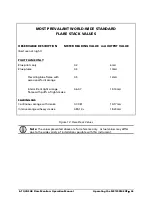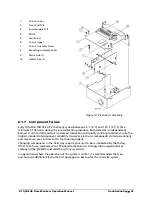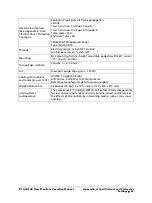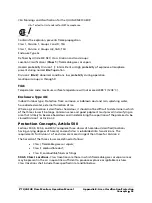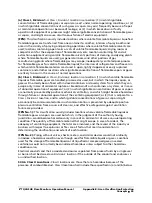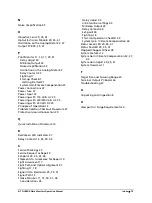
E
2
T QUASAR Flare Monitors Operation Manual
Appendix B: Area Classification/Protection
Concepts
•
58
CSA Markings and Classification for the QUASAR M8100-EXP.
Contains the explosion, prevents flame propagation
Class 1, Division 1, Groups C and D; T4A
Class 1, Division 2, Groups A,B,C&D; T4A
Enclosure Type 4x
Defined by Article 500 NEC; Class, Division and Gas Groups:
Location Classification I (
Class 1
): flammable gases or vapors
Hazard probability Division 1 (): Intermittent or High probability of explosive atmosphere
present during normal
Div 1
operation
Division 2 (
Div2
): abnormal conditions, low probability during operation
Gas/Vapor Groups: A through D
T4A:
Temperature code: maximum surface temperature will not exceed 2488 °F (1208 °C).
Enclosure Type 4X:
Indoor/Outdoor type; Protection from: corrosion, windblown dust and rain, splashing water,
hose directed water, external formation of ice.
Where a given location is classified as hazardous, it should not be difficult to determine in which
of the three classes it be-longs. Common sense and good judgment must prevail in classifying an
area that is likely to become hazardous and in determining those portions of the premises to be
classed Division 1 or Division 2.
Protection Concepts, Article 500
Sections 500-5, 500-6, and 500-7 recognize three classes of hazardous (classified) locations
having varying degrees of hazard, and each class is subdivided into two divisions. The
requirements for Division 1 of each class are more stringent than those for Division 2.
The hazards of the three classes are defined as follows:
•
Class I, flammable gases or vapors;
•
Class II, combustible dust;
•
Class III, combustible fibers or filings.
500-5. Class I Locations.
Class I locations are those in which flammable gases or vapors are or
may be present in the air in quantities sufficient to produce explosive or ignitable mixtures.
Class I locations shall include those specified in (a) and (b) below.
US = Tested to UL standards for NRTL acceptance.



